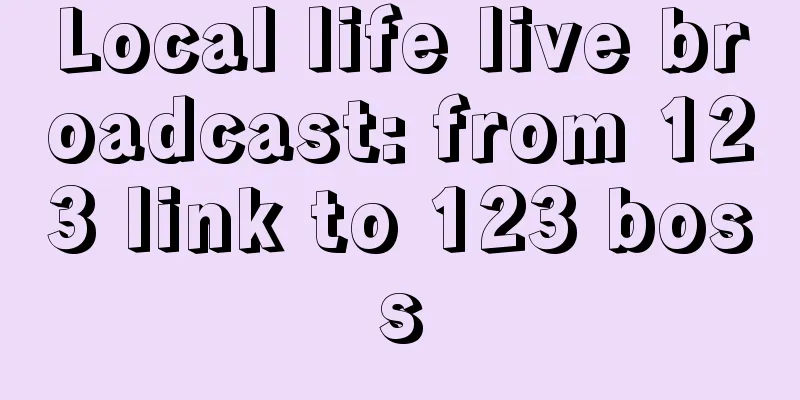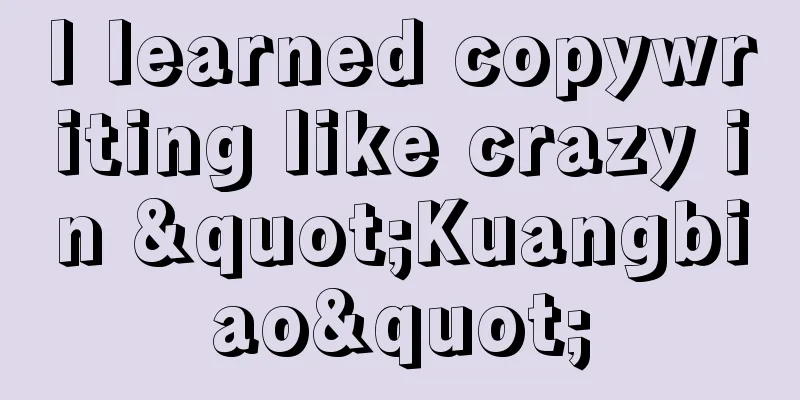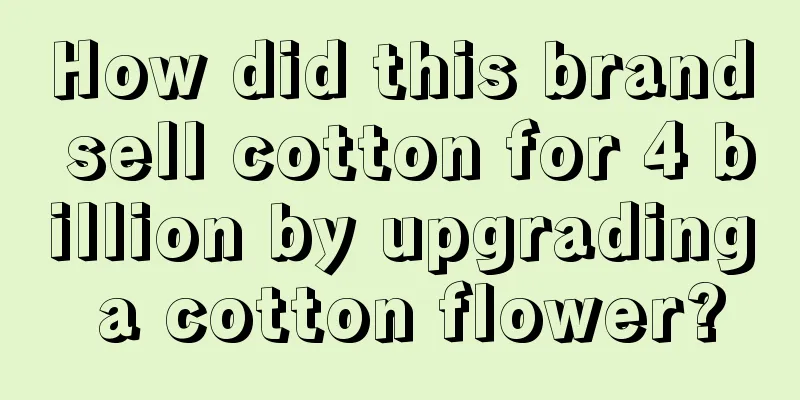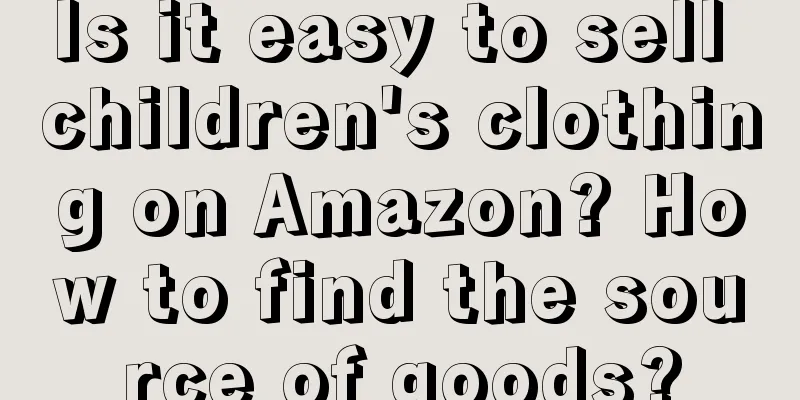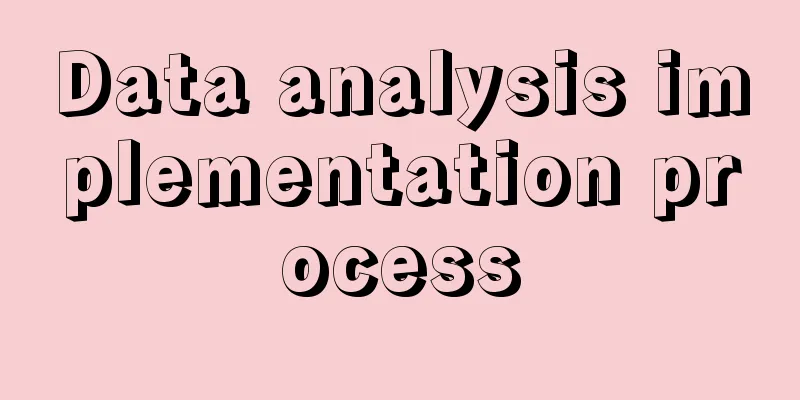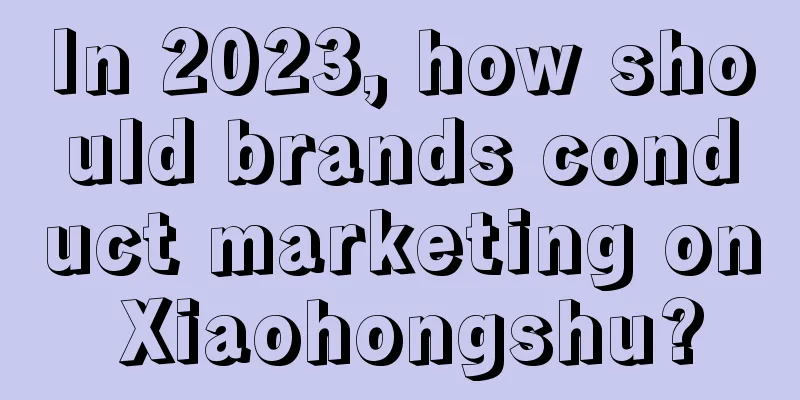User: Brand innovation point
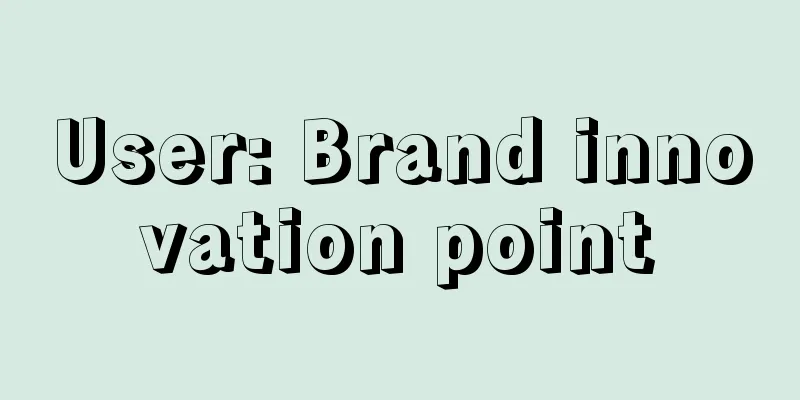
01As long as we talk about brands, in the current business and brand marketing environment, "users" will be mentioned in almost every product-related meeting. "Users " will also be mentioned in every meeting discussing market strategies and marketing methods. " Users" are the starting point of brand innovation and the end point of corporate commercial realization . But what are "users"? 02Understanding what a user is is crucial for a company's decision-makers, management, brand personnel, product managers, and sales teams. It is even more important for formulating a company's brand strategy. Only by clearly defining what a user is can we understand why all company employees need to study the importance of users from different perspectives. Only by understanding what users are can we create super hot products and design a highly efficient marketing closed loop by studying the consumption motivations and principles behind user behavior (marketing here refers to the process of creating customers, not just advertising, communication or promotion), and answer why the company's brand exists! 03Users are not individual natural persons; users are a collection of certain psychological needs (interests, attitudes, hobbies, values, behaviors or habits) . 04Under normal circumstances, people have different understandings of users, and most people understand users as natural persons. Take WeChat as an example. General statistical reports may show that its "users" are 1.3 billion. If all other functions of WeChat (such as payment, public accounts, mini-programs, Moments, video accounts, WeChat groups, etc.) are deleted, leaving only the communication function, the number of WeChat users may still be 1.3 billion, but WeChat's business valuation may immediately increase from the current $300 billion to $10 billion. This practice of defining users as natural persons is not applicable to Internet products. 05Does this apply to consumer goods? The number of people who drink Moutai may not be as large as those who drink Wuliangye or even Langjiu, but the market value of Moutai exceeds 2 trillion yuan, which is N times that of Wuliangye or Langjiu. The value of a brand, in the final analysis, is the difference between products and users, that is, the difference in demand sets. Therefore, from the perspective of business and market, users are not natural persons, but a collection of certain needs. 06How should we understand that users are a collection of certain needs? Since different products/services are used to meet needs in different scenarios, when a product/service fully meets a certain type of need of a user in a certain scenario, then this user can be said to be a user of the product. 07For example, when a user is eating hot pot, he is afraid of getting angry. Every time he eats hot pot, he will drink 3 bottles of Wang Laoji beverage to prevent getting angry. In this scenario, this user is a Wang Laoji user. If this user, when eating hot pot, thinks that Wang Laoji can prevent getting angry, and chrysanthemum tea can also prevent getting angry, he sometimes drinks Wang Laoji and sometimes drinks chrysanthemum tea. Then Wang Laoji only gets half of the user. From the perspective of the set of needs, a natural person can be hundreds or thousands of users of hundreds or thousands of products, or can be multiple users of different products and services of the same company. 08Let’s continue to use the example of WeChat, which is used by everyone. If the number of users of the communication function is 1.3 billion, the number of users of Weifu payment is 500 million, and the number of users of official accounts is 700 million, then based on demand, the number of WeChat users is not 1.3 billion in the statistical sense, but exceeds 1.3 billion. For example, a company says that it has 10 apps with over 100 million users (registered users), but registered users are not considered real users. When there are certain needs, whether they use these apps to meet such needs is the key. So from this perspective, the 10 apps with over 100 million registered users mentioned here do not mean 10 apps with over 100 million users. 09If business and marketing are the study of people's various needs, then they should be studied from four dimensions: the first dimension: people in the biological sense; the second dimension: people in the social sense; the third dimension: people in the cognitive sense; the fourth dimension: people in the situational sense; 10When it comes to users, they have five attributes. Attribute 1: Heterogeneity: Users’ behavioral characteristics vary greatly, and it is almost difficult to find two completely identical users. Because users have different preferences, cognitions, and resources, users cannot be simply unified into a single user profile. 11Attribute 2: Situational; user behavior is affected by the situation. Without the situation, there is no user. The same user will have different reactions and behaviors in different situations. 12Attribute three: plasticity; users are changeable, and their preferences and cognition will change and evolve with different external information stimuli, which is plasticity. Positioning is actually to occupy and shape the user's mind. Products and marketing such as Melatonin and Beibeijia are masters at shaping user cognition. 13Attribute 4: Self-interest; users pursue the maximization of their total personal utility. 14Attribute 5: Limited rationality: Although users pursue rationality, their abilities are limited, their judgments are often wrong, and they are often deceived, so they can only achieve a limited degree. This concept was proposed by Herbert Simon, winner of the Turing Award, the Nobel Prize in Economics, and the American Psychological Association's Lifetime Achievement Award. 15I often recommend the three books "Influence", "The Tipping Point" and "The Crowd" to people engaged in business and marketing. These three books are very helpful in understanding the limited rationality of users and their specific business practices. 16Regarding users, inspired by the book "Thinking, Fast and Slow", at the beginning of this century, the famous psychologist Stanovich first proposed the "dual system theory". Stanovich's "dual system theory" inspired the cognitive psychologist Mr. Kahneman. On this basis, Mr. Kahneman conducted in-depth research on human decision-making theory. Because of the verification of this theory in the business and economic world, it promoted the world's understanding of decision-making cognition. Kahneman won the 2002 Nobel Prize in Economics. 17In his book Thinking, Fast and Slow, Kahneman stated that he believed there were two modes of activity in the human brain, which he called System 1 and System 2. System 1 is responsible for fast thinking, which represents human instincts and habits. It can be carried out quickly and is automatically activated. It consumes very few resources and energy and is dominated by people's habits, experience, stereotypes and other cognitive biases (for example, regional bias is people's instincts and habits. When talking about Henan, Xinjiang, Shanghai, and Beijing, everyone will immediately think quickly and draw their own conclusions). 18System 2 is slow thinking, representing human logic and rationality. Its activation is passive, slow, consumes a lot of human resources and energy, and can be controlled by human consciousness. The human brain evolved not for the purpose of seeking knowledge, but for survival and inheritance. 19The human brain follows the principle of minimum energy consumption. If it is possible not to use the brain, it will not use it . Under normal circumstances, the default thinking logic of System 1 is used. Therefore, more than 90% of people's decisions in daily life are made by System 1. 20Modern people grow up in society and, in addition to their instincts, are also influenced by social adaptation and countless good or bad reasons, so they develop many good or bad concepts, behaviors or habits, such as people's habit of being sensitive to money. twenty oneTherefore, when content related to food, sex, danger, and money appears in life or in advertisements, people will instinctively notice it, because this is System 1 that spontaneously activates people's attention, and people have noticed it before they have made logical judgments. twenty twoHowever, in today's human society, people no longer have to worry about starving to death every day, nor do they have to worry about being eaten by wild animals or the risks brought by the harsh natural environment. Regarding sex and money, there are both ample opportunities to obtain them and universal rules and constraints. Therefore, System 1 is not suitable for dealing with major problems facing humans today. When we make important decisions, we must resist the spontaneous and rapid decision-making of System 1 and consciously enable System 2 for rational thinking, so as to avoid making mistakes. twenty threeFor less important daily chores and routine matters that require extensive experience, it is reasonable to default to using System 1 for decision-making. The advantage of System 1 is that it saves decision-making time and makes up for the loss in decision quality. twenty fourThis is also why in today's environment, it is easier to detonate business and marketing by understanding that users are a collection of certain needs and carrying out systematic creativity based on these needs. Marketing methods such as pre-order, live broadcast, rush purchase, and limited quantity all use the decision-making mechanism of System 1. 25The core work of business and marketing is to understand and study users, understand their consumption motivations (emotions, values, identities, habits, norms), and develop products for user needs. If products are not developed based on needs, they will be unsalable because they do not meet market demand, resulting in a waste of resources and huge risks to business operations. 26The core of business and marketing personnel's research on users is to study user behavior. After we understand the definition of users and the operating logic of user decision-making systems, how should we understand user behavior and the operating logic behind it? 27Before a user's behavior occurs, the user usually receives stimulation from a situation, which will call up preferences and cognitive functions and generate a subjective expected utility. The behavior will produce a certain result, which will become experience, affecting preferences and cognitive functions, and thus may affect the user's next behavior. 28Five-step process. Combining the above description, user behavior will have five steps. 29Perception: User preferences are subjective and are the result of users’ comprehensive cognition of things (what are they?) and their utility (what is their value to me and how big is it?). User preferences are influenced by both innate genetic factors and acquired social experience. 30Preferences: User preferences do not make user behavior consistent. Different situations may cause the same preference to show different behaviors. That is, the same user, facing the same options, may choose different results in different situations. (For example, some users may choose to stay in a clean and safe economy hotel if they are traveling alone, but may choose to stay in a luxurious 5-star hotel if they are attending an event.) 31Selection sets, user preferences in different situations will shape the user's expected utility, and the shaping process will probably go through five stages: perception, interpretation, selection sets, simulation and deduction, and value judgment. In the shaping of "expected utility", some processes may be skipped directly (decision-making is made directly by the instinct, habit, and intuition of System 1), and the shaping process of expected utility will be affected by various cognitive biases. 32Through simulation and deduction, expected utility affects user behavior and choices, and promotes user behavior. 33Value judgment, the user's actual usage experience will form experience, which will be fed back to the user's preferences, correct or strengthen them, and form new preferences for the user. 34The ultimate goal of business and marketing is to encourage users to take certain actions (transactions or usage). Only by knowing the logic and principles behind user behavior can business and marketing activities be more targeted. 35How can we promote user behavior? The most effective way to promote user behavior is to select the right users. If you select a group of users with suitable preferences and cognition, you can promote their behavior without special situation design. But if the preferences and cognition of the user candidate group are not very suitable, you need to make a lot of detailed designs for the five steps of situation shaping to maximize the utility expected by users. 36Users are different, so to understand users, you need to restore them to the specific business and marketing scenarios of your company to accumulate samples and cases. Samples and cases are every use, every feedback or every complaint of users in specific situations. 37When your company has accumulated enough user samples and cases, you can gradually form a user distribution model based on the data, and then use this model to design products, determine prices, establish sales channels in different situations, and make appropriate interactions and communications. Especially when a new brand has appeared, being able to accurately identify your own users can make the company's brand marketing more effective. Author: Liu Yichun Source: WeChat public account "Liu Yichun's Brand Business Innovation (ID: shangyeyiguohui)" |
<<: What kind of operational curve did Tik Tok follow in this World Cup?
Recommend
How long does it take to register VAT on Amazon Europe? How to apply for VAT on Amazon Europe?
When we open a store on the Amazon platform, merch...
How to run Shopee well? What should be done well?
It doesn't cost a penny to join Shopee. For me...
How does Shopee refund the price difference to customers? What should I do if the customer asks for a refund of the price difference?
After some Shopee customers bought a certain produ...
Is it a good time to change jobs after the Spring Festival?
The Spring Festival holiday is over, and workers h...
The blind box market has lost its way and is turning to IP shaping
This article focuses on the "problems" o...
Do I need a bank card to register on eBay? Why do I need a credit card?
eBay is one of the major e-commerce platforms in E...
Young people only go to B1B2 when shopping in shopping malls - new changes in consumption trends
Recently, "reverse consumption" has beco...
“The Boss” is popular all over the world, and short dramas have “unlimited money-making potential” overseas?
While domestic short dramas are booming, they are ...
Data Analyst, how to make a pricing model?
How to make a pricing model in data analysis? Are ...
How long is the settlement cycle for ordinary Amazon sellers? What are the rates for each payment method?
No matter which payment method Amazon sellers use,...
With the addition of video accounts, the wave of local life has become even bigger
Since last year, businesses have received invitati...
ChatGPT opens the "Aladdin era": seven entrepreneurial directions, four capabilities transfer, three business changes, and one AI formula
ChatGPT is believed to have the potential to trigg...
Will Shopee lose points if the product is removed from the shelves after being put on the shelves? How to avoid the deduction?
Many merchants who serve foreign customers now hav...
Is it necessary to choose a brand when selling goods on Shopee? How to operate Shopee?
Shopee is currently the largest cross-border e-com...
Top 10 trends in marketing
Marketing is showing many innovative strategies, f...



